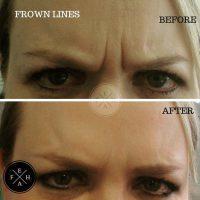Botox Or Fillers? What’s The Difference?
Botox or fillers? Botox or dysport works really good for upper face dynamic lines, such as the horizontal lines of the forehead, vertical lines between the eyebrows and the crow’s feet area.
Little botox goes a long way with these areas. I never try to totally block the muscle activity, little movement is more natural appearing than no movement.
Adding a little restylane or juvederm into the vertical line between brows can help eradicate the static line that has developed.
Just to be clear, I would suggest botox/dysport first, then juvederm/restylane after toxin has kicked in. Now to address the issue of nasolabial folds. The goal is to give you a more youthful , vibrant, well rested appearance.
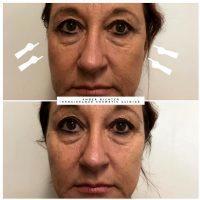
Botox And Facial Fillers Are Effective Methods Of Rectifying Signs Of Aging
In order to achieve this goal, you must re-establish youthful contours of the face. This requires volumizing the temple areas, cheeks, and infraorbital region. There are many options that are available and you must speak with your surgeon or injector on what fits your lifestyle.
Facial contouring is well accomplished with fat transfer, sculptra, or even perlane. Infraorbital injections, restylane or fat transfer. Keep in mind, subtle changes go a long way. (Manolis Manolakakis, DMD, FACS, Shrewsbury Oral & Maxillofacial Surgeon)
The best approach to facial rejuvenation
Correcting facial aging requires a global, artistic approach rather than simply “filling in” a few lines. True facial rejuvenation is a combination of volume replacement with deeper fillers such as Radiesse and/or Sculptra, filling of superficial wrinkle lines with Juvederm, Restylane, or Belotero and modification of muscle action with botulinum neuromodulators such as Botox, Dysport or Xeomin.
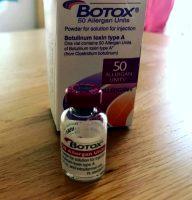
Botox Is The Common Trade Name For This Substance
You would see your best results with Botox for glabellar frown lines and a deeper filler for cheek enhancement to create a more youthful shape to your face. This would also improve nasolabial folds although some Radiesse under these folds would be helpful as well. (Mitchell Schwartz, MD, South Burlington Dermatologic Surgeon)
Botox is best to treat the “dynamic” wrinkles above the eyes such as forehead wrinkles, frown lines (11 lines), and crowsfeet. If the lines persist, “static” wrinkles, I will use fillers to blend and smooth out these creases.
Fillers, such as Juvederm, Restylane, or Radiesse, are predominantly used for the static wrinkles found below the eyes such as the nasolabial folds (parentheses) and marionette lines. As the face ages, there is volume loss and sagging which can worsen the appearance of the nasolabial folds.
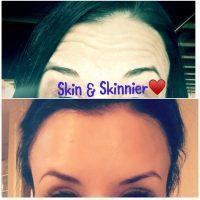
Botox Reduces The Activity Of Muscles In The Face
By adding volume to the midface, the tissues are better supported and essentially “lifted” creating a more youthful and rejuvenated aesthetic. (Scott Farber, MD, FACS, Boca Raton Plastic Surgeon)
Right tool for the right purpose
Botox and filler are great tools we have to help with facial rejuvenation. they are very different in their mechanism of action and uses. The frown lines are best served with botox.
Yes, it doesn’t last as long as a filler, but for most patients produces the best result in this area. for the nasolabial folds, a filler like juvederm or perlane would be optimal. (Bennett Yang, MD, Rockville Plastic Surgeon)
Botox is great for the frown lines. I would consider a filler such as Radiesse for your cheeks to help lift the cheeks and reduce the appearance of the nasolabial folds.
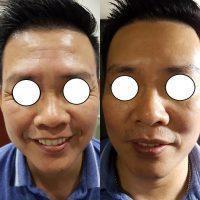
Facial Fillers Are Also Known As Dermal Fillers
I would also consider some filler directly to the nasolabial folds. A newer way to inject filler is to use cannulas, which are not sharp like needles and therefore have a much lower risk for bruising and swelling.
My preferred method of injecting Radiesse into the cheeks is with a cannula. Typically there is no bruising, making it truly a no-downtime procedure. I agree that it is important to see an experienced injector. (Richard Ort, MD, Lone Tree Dermatologic Surgeon)
Botox or dysport is excellent for the frown lines between the eyebrows. I would also recommend that you receive some filler in the vertical lines in this area. Together this will provide you a smooth “brighter” appearance.
Your cheeks and smile lines would be improved with some volume as well. Options would be juvederm, Radiesse, Sculptra, or fat transfer.
I prefer Sculptra or fat transfer since it will last longer and will be more affordable in the long run. (Justin Yovino, MD, FACS, Beverly Hills Plastic Surgeon)
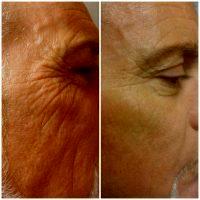
Fill The Trouble Areas With Collagen
If you feel comfortable moving onto fillers, I think you will be pleasantly surprised. Botox will continue to improve your glabellar lines, while the fillers will help to lift your cheeks, reduce your tear troughs and nasolabial folds.(Jordan C. Carqueville, MD, Chicago Dermatologist)
Filler for the nasolabial folds yields a fantastic result. I like to use Perlane or Radiesse for this area, they both work very well. Botox or Dysport work best for the frown lines. I would recommend choosing an experienced and board certified physician to perform the injections.
A board certified dermatologist, plastic surgeon, or facial plastic surgeon are all great choices. (Paul S. Nassif, MD, Beverly Hills Facial Plastic Surgeon)
The frown lines are best treated with Botox. Sometimes filler to any residual line or groove after Botox can give a smoother appearance or enahance longevity of Botox effects.
In regards to nasolabial folds, I would recommend filling the mid face or cheeks with filler. Radiesse and Sculptra are my preferences when treating this region. As we age, our face will tend to lose volume and elongate.
By filling the cheeks, the increased volume supports and lifts the skin and the nasolabial folds are lessened. It also restores the heart shape back to the face which is associated with youthfulness. (Cheryl A. Hull, MD, Rogers Dermatologic Surgeon)
I typically recommend starting with a Botox treatment to relax the muscles in the area, basically eliminating dynamic lines.
Sometimes there are residual creases in the skin after Botox- these are due to actual loss of soft tissue volume (not muscle activity) and can be treated with filler.
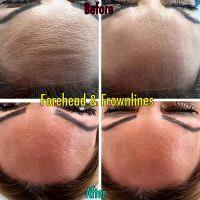
Prevent Or Eliminate Signs Of Aging In The Face Like Wrinkles
In terms of the nasolabial folds- you would definitely see an improvement with filler (Radiesse, Juvederm, Restylane, etc). I also agree with an earlier post – when the midface starts to droop and flattens from volume loss, this definitely contributes to the depth of the nasolabial folds.
Adding volume to the midface or even resuspending the area surgically would also make a significant positive impact. (David M. Lieberman, MD, Bay Area Facial Plastic Surgeon)
Filler For Your Cheeks, Not Your Folds. Botox For Your Frown
Nasolabial folds will be best treated by filler placed into your CHEEKS. The reason your folds have deepened is because the cheek tissue has fallen down and forward causing too much heaviness against the cheek side of the folds.
Adding filler to the folds will add more heaviness to this area- exactly what you do not want. Instead, if you use a high volume filler (like Perlane) high into the cheeks, it will lift some of the heaviness back up into the cheeks and will make the overall contour of your face younger, making the folds much less noticeable.
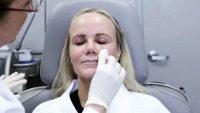
Treat And Prevent Facial Wrinkles
After adding the youthful fullness back to your cheeks (not sure- look at pictures of 20 year olds- they look young because their cheeks are full, not because their nasolabial folds are smooth) you usually don’t need anything done to the folds themselves (although a very small amount of filler could be added to the top of the folds if there is still a bit of harshness left after the cheeks are injected).
The overall effect tends to be much more youthful than when the folds are injected alone. In reality, filler allows us to sculpt, not to fill. Botox is still your best bet for the frown line between your eyes. (Michael R. Menachof, MD, Greenwood Village Facial Plastic Surgeon)
Nonsurgical correction of wrinkles or creases/folds could be ameliorated with either BoTox or fillers. In my experience, BoTox does not truly address the nasolabial folds and frown lines. I would consider placement of a filler in these areas for you. (Lewis Albert Andres, MD, Scottsdale Plastic Surgeon)

What Is The Difference
Botox/Fillers may Be Beneficial Together For Frown Lines
In patients with deep frown lines, the best results are obtained with a combination therapy of both Botox and filler. I feel that fillers are a much preferable way of treating nasolabial folds. (John Whitt, MD (retired), Louisville Plastic Surgeon)
Fillers and Botox for Combined Non-Surgical Rejuvenation
Botox and fillers, though frequently used together, accomplish very different things. Botox is used to weaken certain muscles in the face and neck, so that the effect of them pulling on the skin becomes less.
This reduces certain folds and fine lines, most notably the glabellar frown lines (“11’s”) and crow’s feet. Fillers (e.g., Juvederm, Restylance, and Belotero) are used to fill in depressions or smooth surfaces.
These are more like spackle — a facial aesthetics expert uses them for camouflage. Fillers work well in many areas, most notably the nasolabial folds (“parentheses”). (Evan Ransom, MD, FACS, Bay Area Facial Plastic Surgeon)
Botox and cosmetic fillers
I always ask patients what bothers them. If it is the lines in the glabella area(between the eyebrows) I think botox would work well. If you would like more volume in your cheeks, that is where fillers come into play.
They can lift the creases. Both work well together. Everything is about prevention/maintenance. In my opinion it best to start when you are first noticing the problem. But you want catch things before “they get out of hand”.
Find an experienced injector. Also don’t let price be your limiting factor. If someone is cheap, there usually is a reason for that. (Daniel Radin, MD, Windsor Dermatologist)
Fillers & Botox are the best combination
The fillers can also be place in the cheeks themselves, and even in front of the ears to help pull back the skin a bit. Best to see a highly trained and experienced physician injector for optimal results and safety. (Benjamin Barankin, MD, FRCPC, Toronto Dermatologic Surgeon)
The question always goes back to dynamic lines versus static lines on the face. Lines in the upper third of the face, eyes and above, are most frequently treated with Botox or Dysport. When I see loss of volume in the lower face fillers are the choice.
I suggest Radiesse in the cheeks and n/l fold areas. You have deeper lines that need special attention. This should only be done by a physician trained in these techniques. You can get a great result with little down time. (Thomas P. McHugh, MD, Houston Plastic Surgeon)
